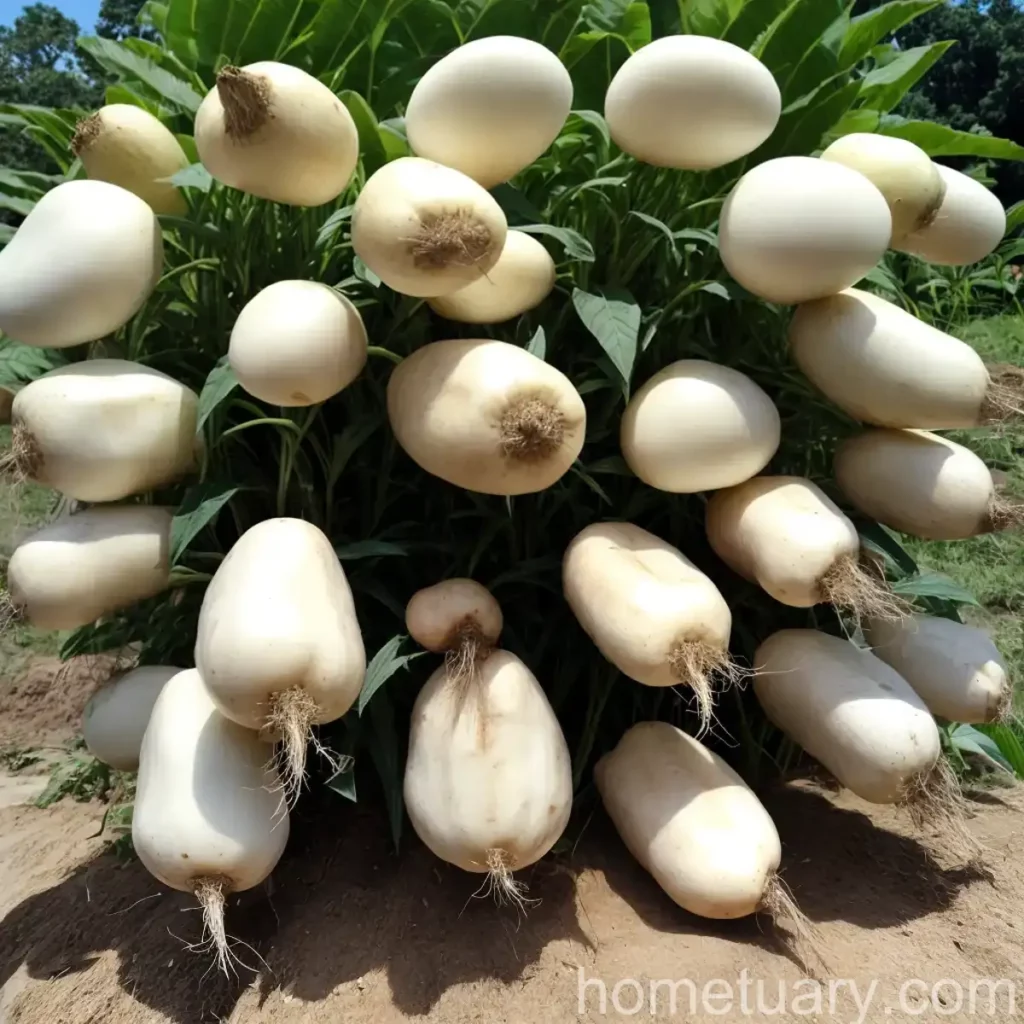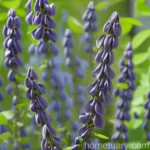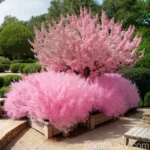All About Jicama (Pachyrhizus erosus)
What is Jicama?
Jicama (Pachyrhizus erosus) is a vine plant known for its edible tuberous root. This perennial vine is native to Mexico and Central America and belongs to the legume family, Fabaceae. The plant produces large, round, starchy tubers that are commonly consumed as a vegetable. Jicama is also known by other names such as Mexican yam bean, Mexican turnip, or Mexican water chestnut.
Jicama has been a staple in Latin American and Southeast Asian cuisine for centuries, and its popularity has been steadily growing in the rest of the world due to its crisp texture and naturally sweet flavor. In addition to its culinary uses, jicama is also valued for its nutritional benefits, making it a versatile and valuable plant for both home gardening and commercial cultivation.
In this comprehensive guide, we’ll delve into the various aspects of jicama, from its cultivation and care requirements to its culinary uses and health benefits. Whether you’re a novice gardener looking to grow jicama in your backyard or a food enthusiast interested in incorporating this unique vegetable into your diet, you’ll find all the information you need to become well-versed in the world of jicama.
Key Takeaways
Jicama (Pachyrhizus erosus) – Quick Summary
- Scientific Name: Pachyrhizus erosus
- Common Names: Jicama, Mexican yam bean, Mexican turnip, Mexican water chestnut
- Family: Fabaceae
- Native to: Mexico and Central America
- Primary Use: Edible tuberous root used in culinary preparations
- Culinary Uses: Raw consumption, salads, stir-fries, juicing, and more
- Nutritional Benefits: Low in calories, high in dietary fiber, vitamin C, and various minerals
- Growth Habit: Vine plant with large, round, starchy tubers
- Cultural Significance: Integral part of Latin American and Southeast Asian cuisine
Now, let’s delve into the various aspects of cultivating and caring for jicama, its uses, and its significance.
Jicama Culture
Uses
Jicama is primarily cultivated for its tuberous root, which is the edible part of the plant and is valued for its crisp, juicy texture and slightly sweet taste. This versatile root vegetable can be enjoyed in various culinary preparations, including raw consumption, salads, stir-fries, and juicing. Additionally, jicama is known for its various health benefits, making it an attractive addition to a balanced diet.
Water
Jicama plants thrive in consistently moist soil. Adequate watering is essential, especially during the plant’s active growth phase. However, it’s crucial to avoid waterlogging, as excessively wet conditions can lead to root rot and other fungal diseases. A well-draining soil mix and a regular watering schedule are key to maintaining optimal soil moisture levels for jicama plants.
Sunlight
Jicama plants require full sun to thrive. They should be provided with at least 6-8 hours of direct sunlight daily for robust growth and optimal tuber development. In regions with extremely high temperatures, some partial afternoon shade may be beneficial to protect the plants from excessive heat stress.
Fertilizer
When it comes to fertilizing jicama plants, a balanced fertilizer with a slightly higher potassium content can support healthy root development and overall plant growth. A slow-release fertilizer or a liquid fertilizer applied at regular intervals during the growing season can help provide the necessary nutrients for robust jicama plants.
Soil
Jicama thrives in well-draining, loose soil with a slightly acidic to neutral pH range (pH 6.0-7.0). Sandy loam or loamy soil types are well-suited for jicama cultivation, providing the right balance of moisture retention and drainage. Incorporating organic matter into the soil can also improve its structure and fertility, supporting the development of healthy jicama plants.
Pruning
While jicama plants typically do not require extensive pruning, removing any diseased or damaged foliage, as well as periodically trimming back overly dense growth, can promote better air circulation and reduce the risk of pest and disease infestations. Additionally, pruning can help maintain a more compact and manageable growth habit for container-grown jicama plants.
Propagation
Jicama can be propagated from seeds or through the use of tubers. When propagating from tubers, it’s important to select healthy, disease-free tubers with viable buds for optimal growth. Jicama seeds can be directly sown in the garden or started indoors in seed trays before being transplanted once the seedlings have developed.
Container Popularity
Jicama can be successfully grown in containers, making it an excellent choice for individuals with limited garden space or those looking to cultivate jicama in a controlled environment such as a patio or balcony. Container-grown jicama plants can thrive when provided with ample sunlight, well-draining potting mix, and adequate moisture.
Jicama Common Diseases
Disease Diagnosis
Jicama plants are generally resilient to diseases, especially when grown in well-draining soil with proper ventilation and adequate spacing. However, they can be susceptible to certain fungal infections, including root rot and powdery mildew, particularly in conditions of excessive moisture or humidity. Regular monitoring for signs of disease, such as wilting, yellowing foliage, or unusual growth patterns, can aid in early diagnosis and prompt intervention.
Jicama Common Pests
Common Pests
Jicama plants may be targeted by common garden pests such as aphids, spider mites, and whiteflies. These pests can cause damage to the foliage and may potentially affect the overall health and productivity of the plants. Implementing integrated pest management strategies, including the use of beneficial insects, insecticidal soaps, or neem oil, can help mitigate pest infestations and protect jicama plants from significant damage.
Botanist’s Tips
- Select a well-draining and fertile soil mix for cultivating jicama, ensuring that it provides adequate nutrients while preventing waterlogging.
- Regularly monitor the moisture levels in the soil to prevent both drought stress and excessive water retention, as jicama plants thrive in consistently moist but not waterlogged conditions.
- Consider providing support for the vining growth habit of jicama plants to help guide their upward growth and prevent sprawling across garden spaces.
- Introduce beneficial companion plants such as marigolds and nasturtiums, which can help deter certain pests and attract pollinators to the garden, benefiting jicama plants and other nearby crops.
Fun Facts
- Jicama is widely used in traditional Mexican cuisine, where it is often enjoyed with a sprinkle of chili powder, lime juice, and salt for a refreshing and flavorful snack.
- The tuberous root of jicama is high in dietary fiber and low in calories, making it an excellent addition to weight-conscious diets and recipes.
- In addition to its culinary uses, jicama has a rich history of traditional medicinal applications, with various cultures utilizing it for its potential health benefits.
Links to External Resources
For further information on jicama, including cultivation techniques, nutrient content, and culinary uses, explore the following resources:
- Jicama: A crisp, juicy and slightly sweet tuber
- Growing Jicama at Home
- Culinary Uses and Nutritional Benefits of Jicama
- Traditional Uses and Folklore Surrounding Jicama
With its delightful crunch, mild sweetness, and versatile culinary applications, jicama stands out as a valuable addition to both home gardens and global cuisine. Its nutritional benefits, cultural significance, and adaptability make it a plant of immense interest and value, inspiring individuals to explore its cultivation, health benefits, and culinary potential.
In conclusion, whether you’re drawn to jicama for its palate-refreshing flavor, its nutrient-rich profile, or its historical and cultural significance, this unique tuberous root holds a special place in the world of plants, offering a wealth of opportunities for exploration and enjoyment.















